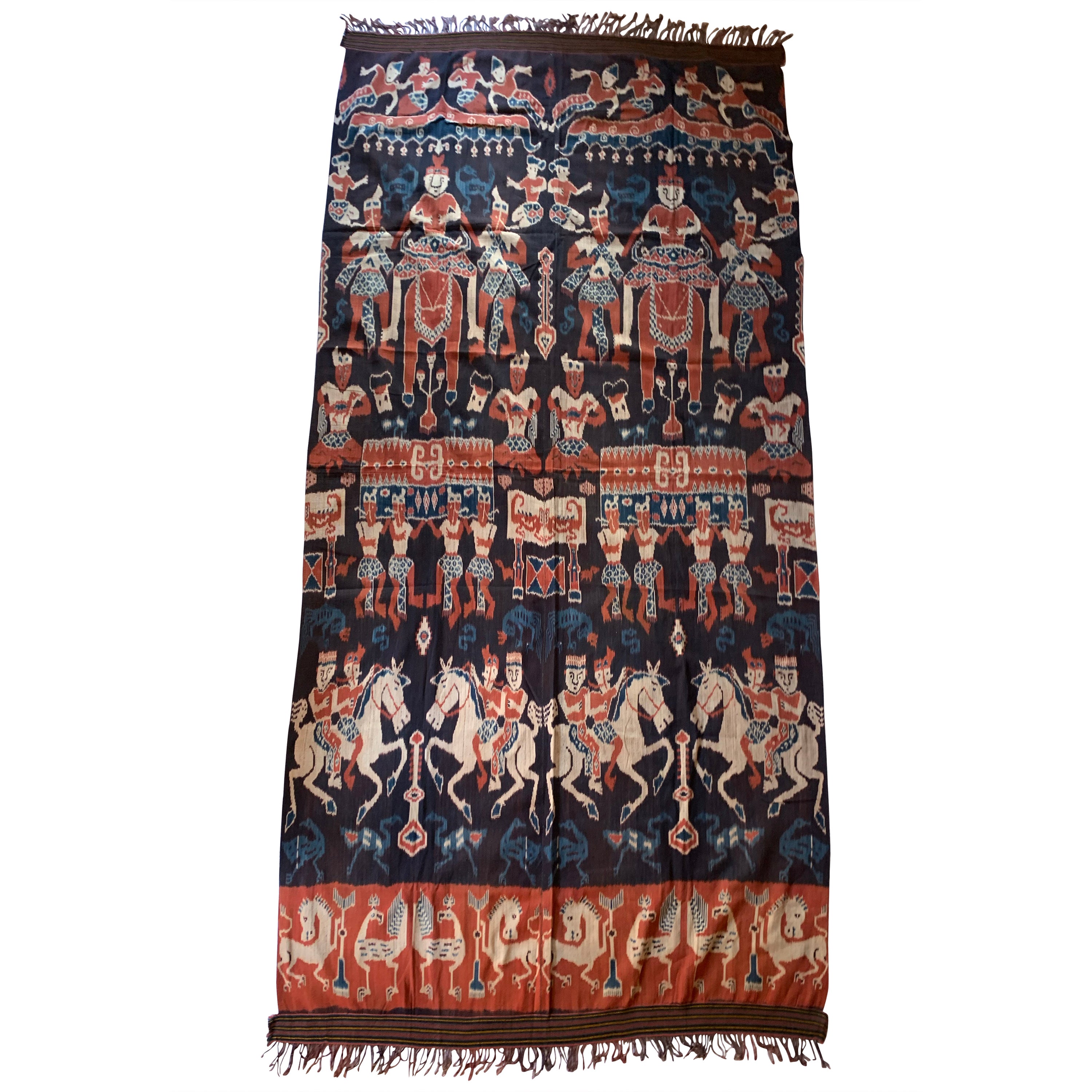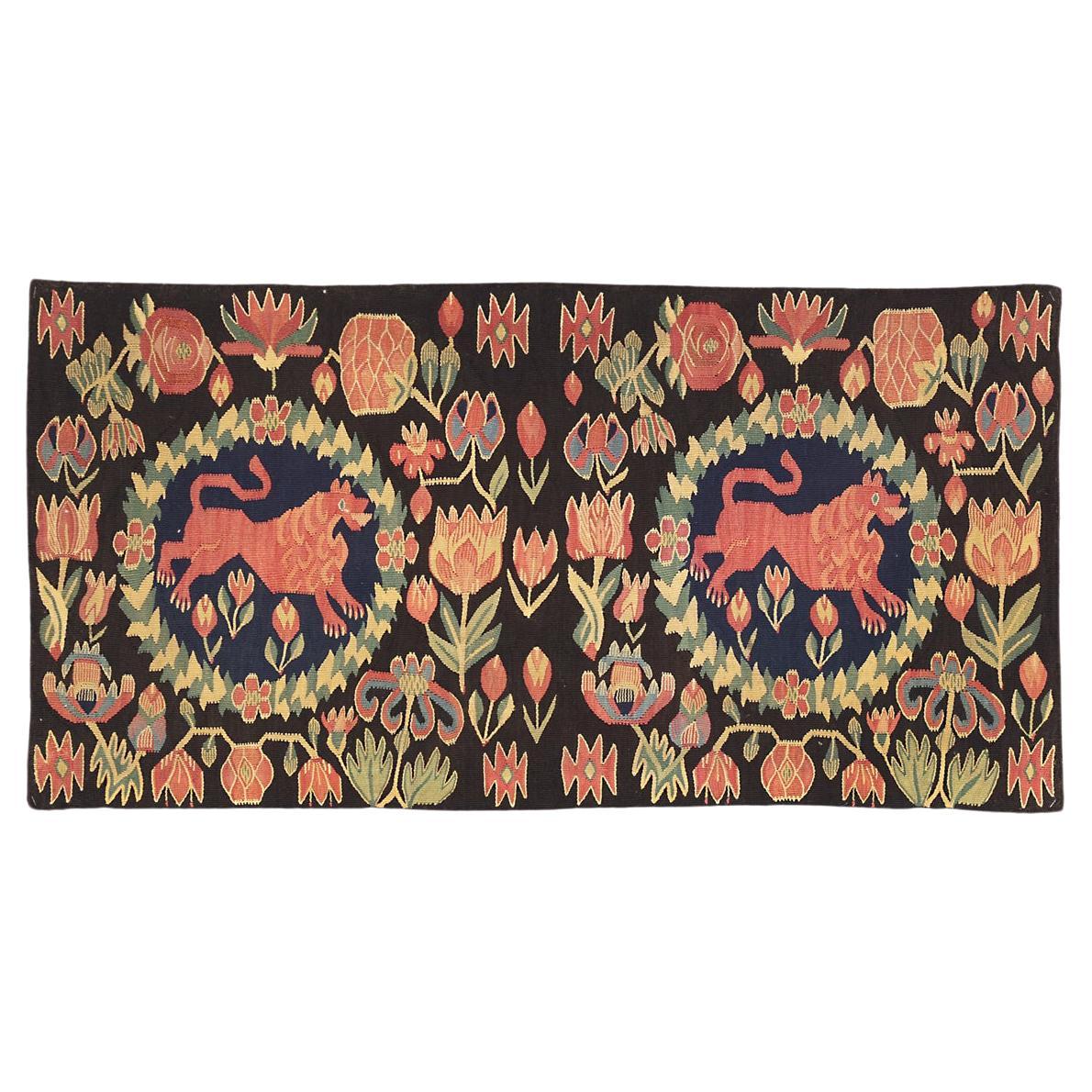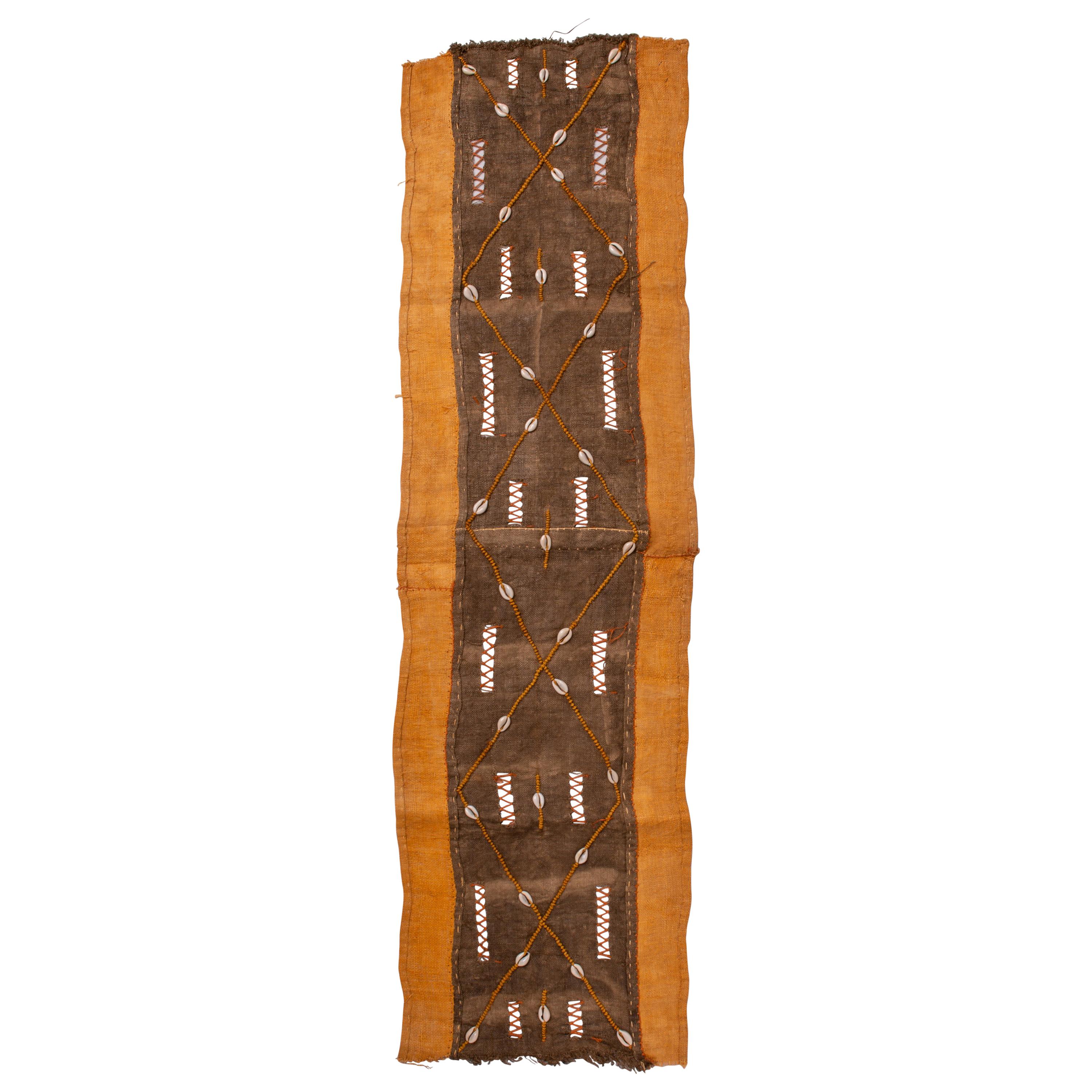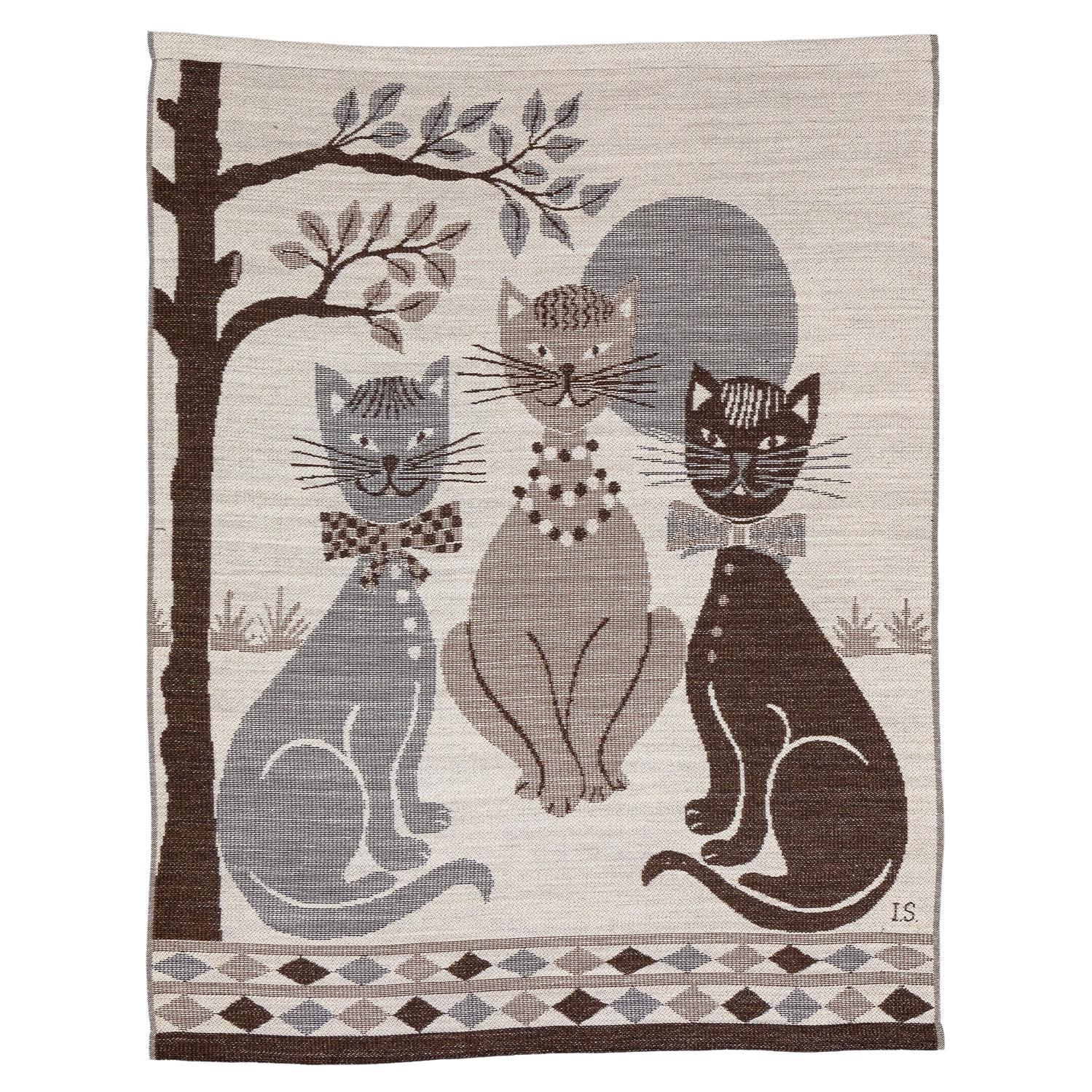Items Similar to A Very Rare Textile with a Scene of a Woman Opening a Door
Want more images or videos?
Request additional images or videos from the seller
1 of 9
A Very Rare Textile with a Scene of a Woman Opening a Door
About the Item
A Very Rare Textile with a Scene of a Woman Opening a Door
Chain embroidery on damask
China
Late 5th century AD
Size: 26cm high, 30.5cm wide - 10¼ ins high, 12 ins wide
Provenance:
Ex Private collection
Ex Francesca Galloway Ltd, 2003
Ex private collection
note: radio-carbon date: 546 - 665 AD
The importance of silk in Chinese culture is attested by the attribution of its legendary discovery to the consort of the Yellow Emperor, the founder of Chinese civilisation. Sericulture, the rearing of silkworms for the production of silk filament, was the invention of Neolithic farmers living along the Huang Ho in north central China more than 4000 years ago. Through the centuries the state encouraged sericulture by making taxes payable in silk. The state controlled production to ensure the prestige of silk and to make its use an Imperial prerogative, demonstrating the special status of the aristocracy. Fine silk garments and furnishings marked special occasions in life and were often interred with the dead.
The Chinese art of silk and its production remained a closely guarded secret for over 3000 years. Its manufacture in a number of centres distributed throughout the Empire was one of the mainstays of the pre-modern Chinese economy, second only to agriculture in its value to the state and in the number of families for which it provided a means of support. Silk was also one of the first of China’s luxury products to be exported in large quantities both along the ‘Silk Road’ and by sea to the rest of Asia. Silk textiles were one of the major lures which brought merchants from the Islamic and Indian worlds, as well as from Japan, to the ports of China and they were eagerly sought after by the first European merchants to reach Canton, which was also the centre of a major weaving region.
To the ancient Romans, China was ‘the land of silk’ and during the Roman Empire it was imported exclusively from the East. It represented extreme refinement and luxury and became so desirable that the wearing of silk provoked a strong reaction from Senators who believed it to be a sign of decadence and a drain on the economy.
- Dimensions:Height: 10.25 in (26.04 cm)Width: 12 in (30.48 cm)Depth: 0.5 in (1.27 cm)
- Materials and Techniques:Silk,Embroidered
- Place of Origin:
- Period:15th Century and Earlier
- Date of Manufacture:Late 5th century AD
- Condition:Wear consistent with age and use. Minor losses.
- Seller Location:London, GB
- Reference Number:1stDibs: LU9363237206112
About the Seller
New to 1stDibs
Joined in the past six months.
No Reviews Yet
Vetted Seller
These experienced sellers undergo a comprehensive evaluation by our team of in-house experts.
Established in 1989
1stDibs seller since 2023
- ShippingRetrieving quote...Ships From: London, United Kingdom
- Return PolicyA return for this item may be initiated within 14 days of delivery.
More From This SellerView All
- A Very Rare and Important Marble Relief of the ‘Resurrection of Christ’Located in London, GBA Very Rare and Important Marble Relief of the ‘Resurrection of Christ’ Attributed to the Master of the Mascoli Altar Marble Venice, Italy Second half of the 15th Century SIZE: ...Category
Antique 15th Century and Earlier Italian Renaissance Figurative Sculptures
MaterialsMarble
- A Very Rare Long Maori Paddle ‘Hoe’Located in London, GBA Very Rare Long Maori Paddle ‘Hoe’ Superb colour and patina Wood Maori / New Zealand Late 18th / early 19th Century Size: 217cm long - 85½ ins long Provenance: W.D. Webster, B...Category
Antique Late 18th Century New Zealand Tribal Art
MaterialsWood
- Very Rare and Early Carved Vessel in the Form of a HedgehogLocated in London, GBA Very Rare and Early Carved Vessel in the Form of a Hedgehog Alabaster Near Eastern 3rd Millenium BC SIZE: 9.5cm high, 9.5cm wide, 15.5cm deep - 3¾ ins high, 3¾ ins wide, 6 ins ...Category
Antique 15th Century and Earlier Antiquities
MaterialsAlabaster
- A Very Rare and Early Northwest Coast Maternity FigureLocated in London, GBA Very Rare and Early Northwest Coast Maternity Figure Aged patina through handling Wood Kwakiutl (Kwakwaka ‘wakw’) Northwest Coast America / Nootka 19th Century SIZE: 20cm high - 8 ins high PROVENANCE: Adam Prout, UK Ex Private collection The elegant seated female figure holds her baby upon her knees, cradling the suckling infant’s head. The female figure displays a very distinctive ‘conical’ shaped hair-style, although the domed forehead, which was flattened artificially, was practiced by the Kosimo (Salish). The Kwakiutl are one of several indigenous First Nations that inhabit the western coast of British Columbia, Canada, from central and northern Vancouver Island to the adjacent mainland coast. The Kwakwaka'wakw, or ‘Kwak´wala-speaking people’, live along the Pacific Northwest coast of British Columbia. The tribes once numbered twenty-eighty, who lived on northern Vancouver Island and the adjacent mainland. They are known for the ‘potlatch’ ceremony which in Kwak'waka literally means ‘to give’. The ceremony marks all the important moments in the life of the Kwakwaka’wakw: birth, marriage and death in particular. It is a jubilant celebration organised by the chief of a tribe or a host, during which offerings are offered, masks exhibited and dances staged. Much of our early knowledge about the Kwakiutl is attributed to Franz Boas...Category
Antique Mid-19th Century Canadian Native American Objects
MaterialsWood
- A Very Fine and Rare Headrest ‘Kali’ or ‘Kalimasi’ / ‘Kali Toloni’Located in London, GBA Very Fine and Rare Headrest ‘Kali’ or ‘Kalimasi’ / ‘Kali Toloni’ Bamboo, wood, coconut ‘sennet’ fibre The ‘cross-bar’ (rest) engraved with triangular design reminiscent of ‘Tapa C...Category
Antique Early 19th Century Tongan Tribal Art
MaterialsBamboo, Natural Fiber, Wood, Coconut
- A Very Fine Set of Persian Chiselled ArmourLocated in London, GBA Very Fine Set of Persian Chiselled Armour Steel, gold, gilt, mail; iron and brass, leather Dated 1797 Persia Late 18th Century Size: helmet: 70cm long - 27½ ins long / shield...Category
Antique Late 18th Century Persian Arms, Armor and Weapons
MaterialsGold, Brass, Steel, Iron
You May Also Like
- Very long Ikat Textile from Sumba Island with Stunning Tribal Motifs, IndonesiaLocated in Jimbaran, BaliThis Ikat textile originates from the Island of Sumba, Indonesia. It is hand-woven using naturally dyed yarns via a method passed on through generations. It features a stunning array...Category
Late 20th Century Indonesian Other Textiles
MaterialsYarn
- Very Large Ikat Textile from Sumba Island with Stunning Tribal Motifs, IndonesiaLocated in Jimbaran, BaliThis Ikat textile originates from the Island of Sumba, Indonesia. It is hand-woven using naturally dyed yarns via a method passed on through generations. It features a stunning array...Category
Late 20th Century Indonesian Other Textiles
MaterialsYarn
- Andrianna Shamaris Rare Bold indigo Cotton Sumba TextileBy Andrianna ShamarisLocated in New York, NYBeautiful soft Ikat, with stunning seven inch tassels, on this rare bold indigo and white textile from Sumba. Fabulous on a sofa, bed, a wall hanging, or even to wear as a shawl. Myt...Category
Early 20th Century Indonesian Tribal Quilts and Blankets
MaterialsCotton
- Rare 18th-Century Swedish Textile Lion MotifsLocated in Ferrara, ITThis is a rare 18th-century Swedish textile that has been mounted and framed on a backing and measures 103x 48CM in size. This unique European textile ...Category
Antique 18th Century Swedish Other Textiles
MaterialsCotton
- African Textile Panel with ShellsLocated in Alessandria, PiemonteOld African textile panel with shells,: You can mount on a panel for wall, or place on table, or mount as lampshade. Its colors are sunny. It's wonderful for a sea-house ! B/1677-1Category
Mid-20th Century Congolese Modern Textiles
MaterialsRaffia
- Antique European Textile with Signature of IS, 1970-2000Located in Ferrara, ITThis is a European textile with a signature of IS in the bottom right-hand corner that measures 160 x 130CM in size. This piece depicts three cats sit...Category
Late 20th Century European Other Textiles
MaterialsWool
Recently Viewed
View AllMore Ways To Browse
Qing Dynasty Jacket
Embroidery Americana Patriotic Silk
Khmer Textile
Qing Dynasty Wedding Jacket
Embroidery Of Dragon And Phoenix
Sumatra Embroidery
Narrow Bed
Antique Chinese Embroidered Lion Tapestry
Hand Embroidered Silk Suzani Runner
Iida Shinshichi House
Bed Tables Asian Style
Antique Japanese Obi Belt
Japanese Kimono Cotton
Ottoman Turkish Shoes
Vintage Red Silk Brocade Japanese Ceremonial Kimono
Mid Century Embroidered Silk Brocade
Chinese Kesi
Sumatra Shawl





